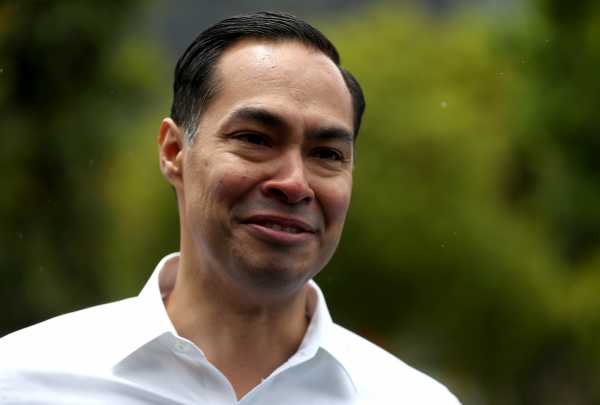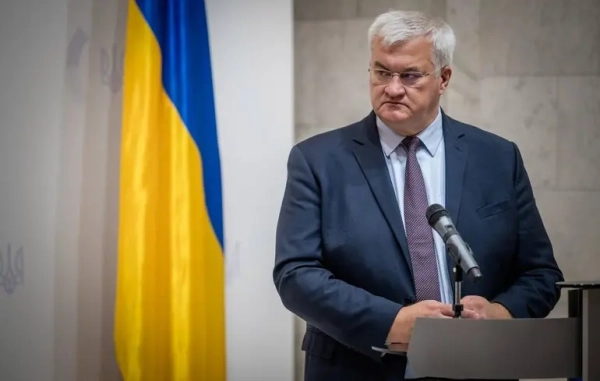
Part of
Vox’s guide to where 2020 Democrats stand on policy
Ahead of a major climate change Democratic forum on CNN, Democratic presidential candidate and former San Antonio Mayor Julián Castro has released his version of the Green New Deal, a climate change plan that closely aligns with his presidential bid. It is progressive, but not the most liberal of the climate proposals released so far, and focuses heavily on social justice and civil rights.
Castro bills his plan as “ambitious and achievable” — it calls for a $10 trillion investment over 10 years, putting him in the middle of the pack as far as cost is concerned. His rivals Pete Buttigieg and Beto O’Rourke fall at the low end, with proposals that cost about $2 trillion and $5 trillion, respectively; Bernie Sanders has called for a $16.3 trillion investment.
The candidate also splits the difference on timeline. While his plan would not make the US completely carbon-neutral by 2030, as is called for by the influential Green New Deal-backing group the Sunrise Movement, it does call for all electricity generation to be carbon-neutral by 2030, and for the US to be completely carbon-neutral by 2045, five years before the target suggested by scientists at the Intergovernmental Panel on Climate Change.
Though 2045 is only 26 years away, Castro insists getting there is possible with major investments including a $200 billion infrastructure project fund (that would distribute money for electric vehicle charging stations, water management, smart grids, and electric public transportation) and $70 billion for conservation efforts.
Overall, Castro embraces the spirit — if not the exact language — of the Green New Deal, working to craft a climate plan that looks out for labor and fossil fuel workers, and creates protections for communities of color. While it lacks the depth and rigor of former candidate Jay Inslee’s five-part climate road map, it remains true to the goals of Castro’s campaign, namely, instituting winnable reforms while keeping in mind the concerns of populations that have not always been at the center of national conversations.
For Castro, prevention and conservation are key to stopping climate change
Castro’s plan echoes those of his rivals in many ways — he targets similar deadlines for electrification and carbon neutrality, and he embraces the concerns of progressives who find the Trump administration’s environmental efforts wanting. In doing so, he has developed a plan that is somewhat middle-of-the-road: It does not require the massive investment and mobilization that Inslee’s plans do, but it also seems to acknowledge the concerns of some activists that some of his competitors’ ideas do not have aggressive enough timelines.
To guide his climate efforts, Castro proposes a new interdepartmental agency, the National Climate Council, that would coordinate climate change work. The agency would help steer the climate-related work of the departments of Interior, State, Housing and Urban Development, Transportation, Justice, and others.
Beyond carbon neutrality, Castro sees cleaning up existing messes and rolling back Trump-era rules as key to the climate change fight. He wants to expand protections of natural resources — with new protections of areas like wetlands and forests that would include a ban on fossil fuel exploration and extraction on public lands. And he hopes to help with carbon capture by getting 30 billion new trees in the ground by 2050. By that year, he also wants 50 percent of US lands and waterways to be under federal protection; he proposes achieving this by expanding the current borders of natural parks and monuments, by adding new wildlife refuges, and by helping cities expand their parks.
Those conservation efforts are separate from his plans for water and soil: Castro wants $100 billion over 10 years to conserve those resources, half of that sum coming from the federal government, and half of it coming from state, local, and private investment. That money will go to both expansion and restorative efforts. On top of that work, the candidate proposes an additional $20 billion over 10 years to protect and clean waterways.
Some of this work will be done by the federal government, other parts by private firms. Overall, Castro promises his plan will lead to the creation of 10 million new jobs. At least 15,000 of those will be the federally employed youth workers of Castro’s “Green Opportunity Corps,” a group modeled on the New Deal’s Civilian Conservation Corps that would see new high school and college graduates working on conservation projects around the country.
Those projects could include cleanup efforts; Castro hopes to accelerate Superfund projects — federal hazardous site restorations — already in progress and expand that work through new taxes on fossil fuel companies. He proposed using some restored toxic sites as platforms for green energy projects, and has a separate plan $50 billion plan he unveiled earlier this year for cleaning up lead contamination across the country.
This switch will mean the loss of fossil fuel-related jobs. To address that problem, Castro proposes a program modeled on the GI Bill that would help fossil fuel workers transition to new jobs, and he wants to create a federally funded program that would help fossil fuel employees suffering from health issues brought on by their work, an idea included in the Green New Deal. The former mayor also hopes to create a federal framework that would help ensure those workers get to keep their pensions and retirement funds even after the fossil fuel companies they work for shut down.
Finally, to help those already affected by climate change — particularly those affected by flooding and climate-exacerbated natural disasters — Castro wants to expand access to the National Flood Insurance Program, use new technologies to create updated flood maps and to better understand upcoming flood risks, and reinstitute Obama-era flood protection regulations.
He also stresses the importance of preventive action by making community development funding available to local governments that create plans for dealing with natural disasters and that complete natural hazard risk assessments; increasing pre-disaster mitigation funds by $500 million per year; and distributing $1.5 billion per year to communities rebuilding from natural disasters to help them rebuild in a way that mitigates the risks of future damage.
Castro sees a healthy environment as a civil rights issue
More than most candidates, Castro has focused on how his proposals will affect communities of color — he was the first to create a plan to address policing, and he has a sweeping plan to increase Native Americans’ political power — and his climate plan is no different. In the plan, he cites a study conducted by the United Church of Christ that found the majority of Americans who live near toxic waste sites are people of color, and notes that environmental factors have had negative impacts on the black community in particular, using the high rates of asthma among black children as an example.
To this end, Castro wants to use presidential power (along with some new laws) to protect Americans — and particularly Americans of color — from “environmental discrimination,” a term he uses to encapsulate what he frames as the way climate change “disproportionately affects communities of color and low-income Americans.”
First, Castro says he would ensure all branches of government — including his executive branch — are following a Clinton administration executive order that requires federal agencies to find ways to protect low-income communities and communities largely made up of people of color from negative effects caused by pollution. Castro says he would lobby Congress to turn this order into a law that also explicitly includes protections for Native American nations and the lands under their jurisdiction.
The former mayor would also order his Environmental Protection Agency to do more to investigate, and litigate, environmental civil rights complaints; and he would pressure Congress to create new laws making it easier for private citizens to sue for discrimination without being under the aegis of a federal agency (as they currently must be in order to pursue a lawsuit). He would also use the EPA to entice states to embrace his focus on environmental justice by blocking states that lack environmental justice policies from receiving EPA funds.
To address the growing number of climate refugees — there could be as many as 1 billion in the years to come — Castro says he would push Congress to expand the definition of a refugee to someone fleeing their home for reasons related to climate change.
Castro argues that this focus on justice is important because climate change is not a standalone issue; like Elizabeth Warren — whose plans have targeted climate change from a variety of angles — the candidate says the next president must address not just climate change but also tangential causes of pollution and its effects. He sees a broadly progressive agenda as the way to do this, and argues that issues like the move to a $15-per-hour minimum wage and the push to strengthen unions are also climate issues in that they impact where and how people work and their ability to lobby their employers to embrace greener practices.
Castro has led his rivals in developing unique and progressive immigration strategies. He has not been a leader in climate policy, however — that role fell to Inslee — and his new plan does little to change that. While he has included some ideas that others have not, like his approach to climate refugees, his plan shows that on climate, at least, Castro is sticking closer to to the middle of the pack.
Sourse: vox.com






